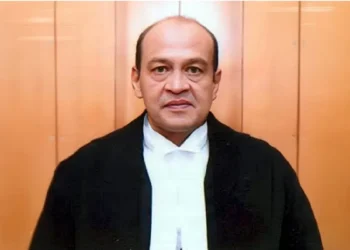Somnath temple
The Gujarat government is building a wall around the compound to prevent encroachment near Somnath temple in Gir. On this issue, the Supreme Court has said that the height of this wall should be 5-6 feet. A bench of Justice BR Gawai and Augustine George Christ have given this instruction. A person has filed a petition against this wall and said that this wall is being built so that no one can enter.
Solicitor General Tushar Mehta, who is representing Gujarat, opposed the petitioner’s claims, saying that the officials can always protect the government land by making a compound wall. To this, Justice Gawai said, “Do not build a 12 feet wall. If you are protecting it, then the five feet, six feet wall is enough.” This Mehta said that the person who filed the petition has made oral claims about the 12 feet wall.
What was the debate in the court?
Solicitor General Tushar Mehta said, “We are not making a fort because no one can enter. It is to stop encroachment.” The bench said “Why do you want to build a 12 feet high complex wall? Make it five or six feet high.” Justice Gawai asked Mehta to give instructions to the concerned collector about this. Mehta assured, “I will give instructions.”
Senior advocate Sanjay Hegde, appearing for the petitioner, said that the officers are trying to change the status quo by building the wall of the campus. Mehta denied Hegde’s claims and cited his previous statement in the apex court in the case. On 31 January, Mehta made a “clear statement” that no activity, including Hindu religious rituals, is not being allowed on the encroached land. On Monday, he said that the situation remains the same. He said, “We are building a wall wall only to prevent encroachment.”
Hegde said that the officers are building a 12 feet high wall and the petitioner does not know what is happening inside. The bench said, “Why don’t you know? Now drones are available everywhere.” After this, Hegde said, “It is as if you have built a great wall of China and are saying that we are protecting it.” Mehta replied, “This is not a great wall of China. We should not make sensational.” The petitioner said that the status quo should be maintained on the site. The bench then postponed the hearing for May 20.
The apex court told Hegde that if the authorities have done any other construction, they could knock the court. On 31 January, the apex court dismissed a petition seeking to organize a “Urs” festival from 1 February to 3 February at the demolished dargah (Muslim pilgrimage) in Gir Somnath district of Gujarat. The bench noted Mehta’s argument that all unauthorized constructions, including temples built on the government’s land, were demolished.
Petition was filed on 28 September
A contempt petition was filed against Gujarat officials on September 28 for demolishing residential and religious structures in the district without the prior permission of the apex court. The Gujarat government justified its demolition action and said that it is a ongoing campaign to remove encroachment on public land. The bench was hearing a petition against the Gujarat High Court order that refused to maintain the status quo on the demolition of Muslim religious structures.
On October 4 last year, the apex court warned the officials that if they were found contempt of his order against such action, he would ask them to restore the structures, but refused to order the status quo on the demolition.
The court had banned bulldozer action
On September 17 last year, the apex court prohibited the demolition of properties by some states in another case related to demolition, including assets of individuals accused of crime without permission, and said that a single case of illegal demolition is against the “basic principles” of the Constitution. However, the apex court clarified that its order does not apply to unauthorized structures in public places such as public roads, pavements, railway lines or water bodies.










